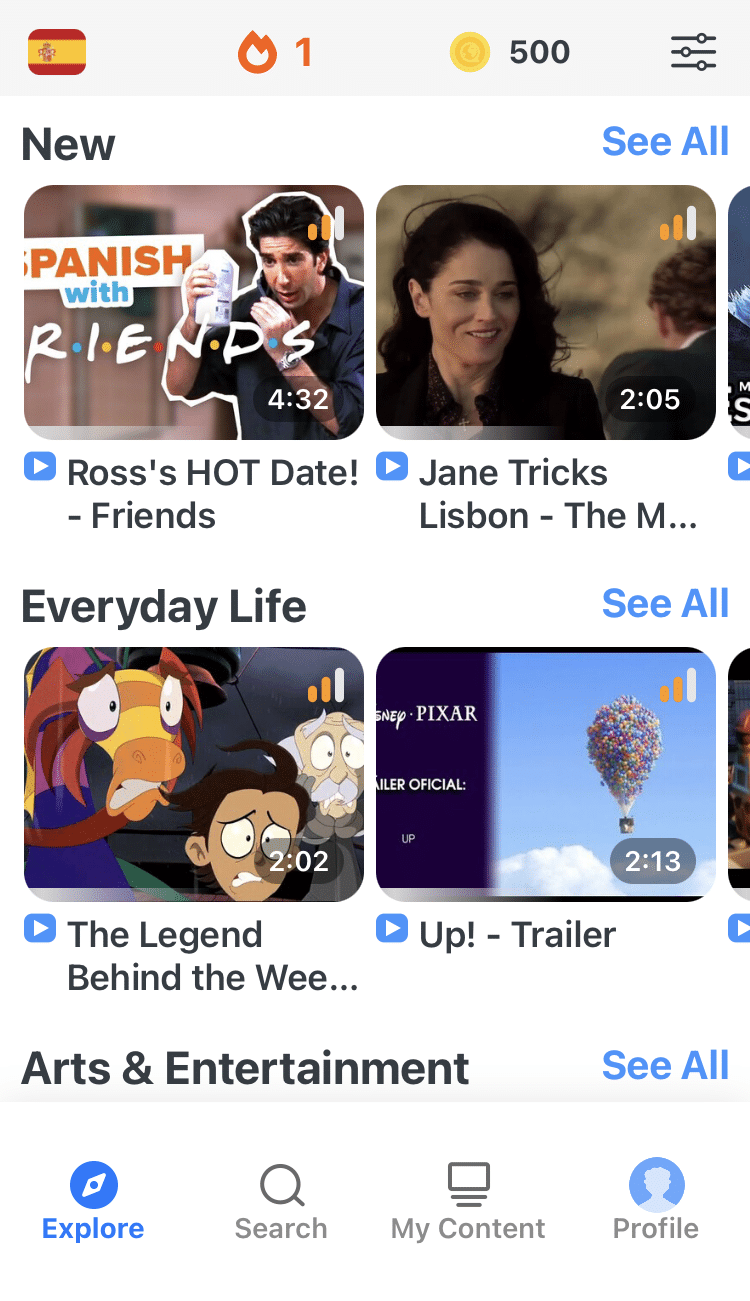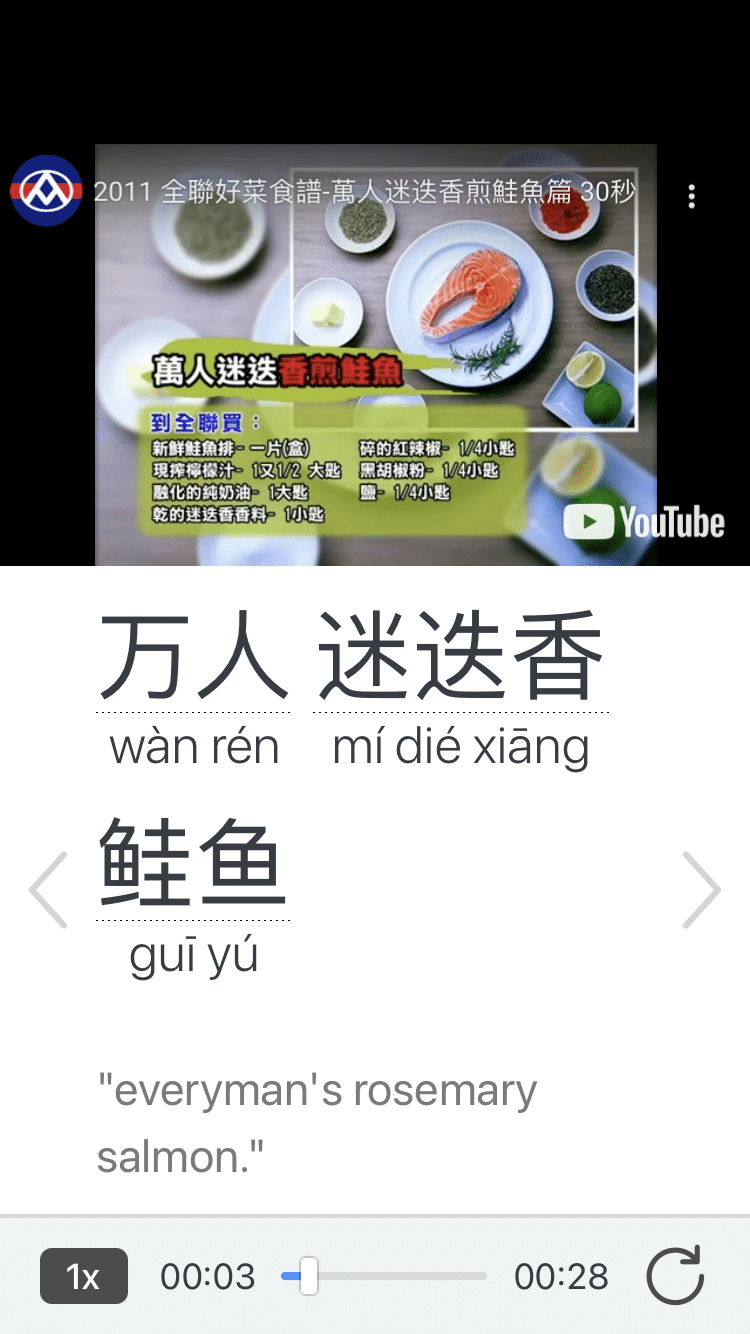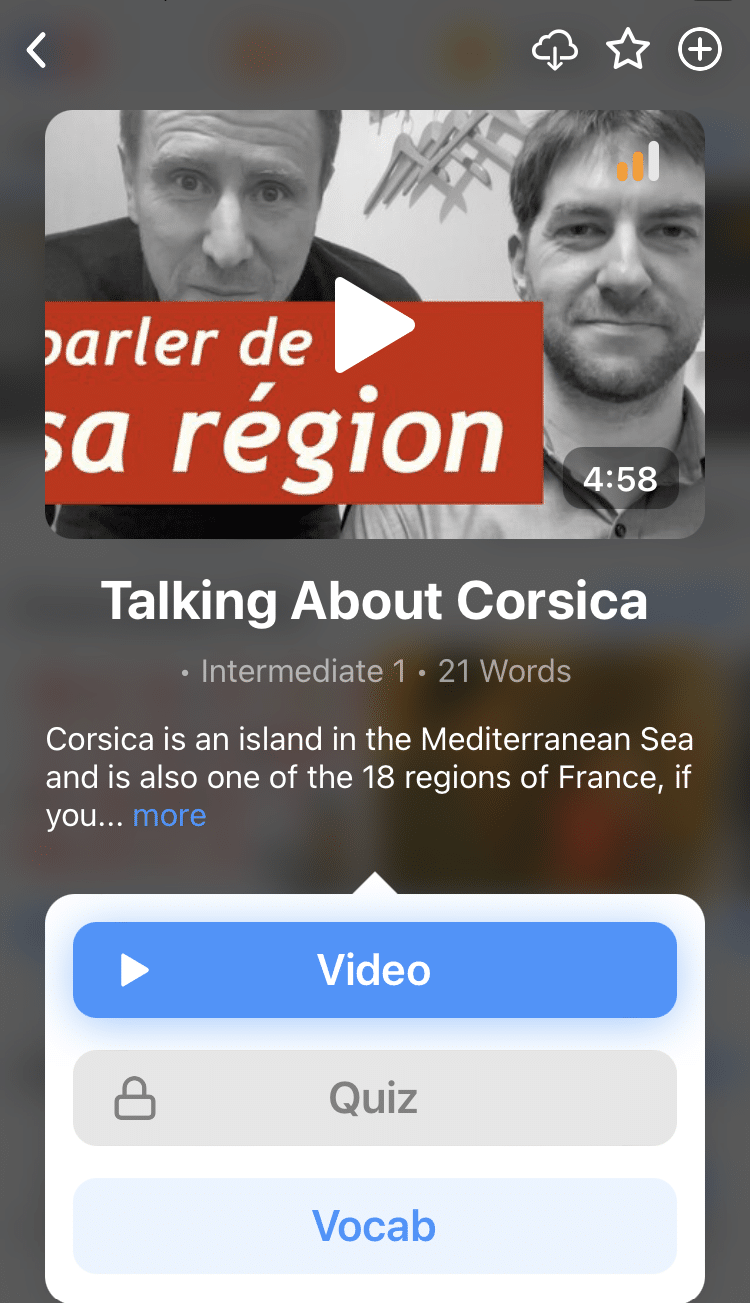
Intensive and Extensive Reading for Language Learning
Reading is basic. It’s practical. It opens up worlds and broadens horizons.
It’s also just enjoyable!
The great news is that not only is it possible to train yourself to read well in your target language, you can actually use reading as a method to teach yourself vocabulary, sentence structure and more.
Intensive and extensive reading, named after a detailed study by Harold Palmer, are two distinct methods of reading. Both are useful for learning a second language.
Read on to find out how to use these two different but complementary strategies to strengthen your reading skills and overall fluency.
Contents
- The Difference Between Intensive and Extensive Reading
- What Intensive Reading Is
- What Extensive Reading Is
- And One More Thing...
Download: This blog post is available as a convenient and portable PDF that you can take anywhere. Click here to get a copy. (Download)
The Difference Between Intensive and Extensive Reading
Intensive reading is a more in-depth approach method of reading. You’re aiming for complete comprehension, so you try to understand the meaning of each word. On the other hand, the extensive reading method is much more casual—you just want to grasp the overall point of the text, so you can read faster and more leisurely.
Both types of reading are more important for language learners. With intensive reading, you’d usually only do it in short bursts because it takes a lot more energy and focus. But extensive reading is the type of reading that you’d do for fun—you can do it for hours, since you don’t have to look up every word.
Let’s look more closely at both of these.
What Intensive Reading Is
Intensive reading has testing, evaluating and increasing knowledge as the primary focus. Understanding the literal meaning of what’s being read is vital. Reading intensively often includes note-taking and attention to details.
In intensive reading, there’s an emphasis on deconstructing sentences to understand grammar and syntax rules as well as to extricate the details of the topic. It can also involve reading comprehension testing, such as finding answers to specific questions.
For example:
Reports, contracts, news articles, blog posts and short pieces of text such as short stories
SMART Goals for Intensive Reading
SMART goals are goals that are Specific, Measurable, Attainable, Relevant and Timely. This means that you’re clear about what you want and have a realistic, step-by-step plan for achieving your goals.
An example of an intensive reading program using the SMART method might be:
Specific: “I want to read five blog posts each week.”
Measurable: “I’ll read one blog post a day.”
Attainable: “I’ll only read blog posts in the language I’m studying.”
Relevant: “I’m trying to learn how sentences are structured and pick up every detail of what’s written.”
Timely: “Every morning from 8-9, I’ll read intensively.”
Remember, this plan is just an example. Use it as a jumping-off point for your own intensive reading program. Choose what you like to read, and insert them in the appropriate spots.
Also, the number of items on the reading list and times are suggestions. Tailor the plan to fit your schedule.
When you read intensively, ask yourself questions about the material and look for answers. Compile a vocabulary list and look up every word you don’t recognize. Read to dissect the structure of the piece and evaluate grammar rules so you can readily apply them to your own writing.
Intensive Reading Materials
Intensive reading materials are everywhere. Blog posts, news articles and any pieces of short text are ideal for intensive reading practice. Additionally, children’s books work well at the beginning of intensive reading programs.
For example, say you’re learning to speak (and read!) Portuguese. I Googled “magazines written in Portuguese” and within 10 seconds I had so many to choose from. Here are just a couple:
- Planeta focuses on environmental, cultural and health issues.
- The Brazilian edition of Elle is just as sleek and up-to-date as the one I pick up at my local newsstand.
I tried the same line in my browser but substituted Italian for the target language. Italian is a language I read and speak so the huge assortment of magazines that came up was absolutely wonderful.
- Corriere della Sera brings you daily news from Milan.
- D la Repubblica is an Italian magazine with lifestyle, fashion, beauty and even cooking tips.
Honestly, there isn’t one material that’s best for everyone; it’s really a matter of personal preference. People tend to read more when they’re interested in what they’re reading.
You don’t even need to stick to text-only resources. Reading materials are all around us if you know where to look. For example, the FluentU learning program has interactive subtitles, full transcripts and multimedia flashcards are all ways to practice intensive reading.
FluentU takes authentic videos—like music videos, movie trailers, news and inspiring talks—and turns them into personalized language learning lessons.
You can try FluentU for free for 2 weeks. Check out the website or download the iOS app or Android app.
P.S. Click here to take advantage of our current sale! (Expires at the end of this month.)
Remember, resources for both types of reading can come from internet downloads, a local library or any bookstore and, apart from the bookstore, a lot of it is free.
What Extensive Reading Is
Extensive reading is a completely different sort of approach.
Know how it feels when you’re doing something simply for the joy of doing it, like riding a bicycle or dancing?
Extensive reading is like that. It’s reading for fun. And it’s doing it as often as possible.
Fluency and total comprehension aren’t necessary for extensive reading. It’s great to read at or, even better, below a comfortable level of understanding. Most of the time, an unfamiliar word can be deciphered by the surrounding text and if not, that’s fine, too. It’s not vital to understand every single word to get the general idea of a particular passage.
In general, 90-95% of the words should be familiar in order to read comfortably in a foreign language. And most of us can get along pretty well even without having all that vocabulary in our toolboxes. Guessing, especially when reading extensively, does work.
The idea behind extensive reading is that increased exposure leads to stronger language skills. Aside from vocabulary, seeing the structure, idioms and cadence of a language also leads to familiarity, which leads to reading competence.
For example:
Magazines, graded readers, novels and comic books
SMART Goals for Extensive Reading
It’s far easier to set SMART goals for extensive reading because so many of the stressful challenges (vocabulary lists, searching for answers, etc.) are no longer factors. This is the type of reading for enjoyment, remember?
A SMART goal strategy for extensive reading could read as follows:
Specific: “I want to read one book a week.”
Measurable: “I’ll read 30 pages each day.”
Attainable: “I won’t read any books that aren’t written in my target language.”
Relevant: “I’m doing this so I’ll be able to read well in this foreign language.”
Timely: “I’ll read every day from 4-6 before I eat dinner.”
Extensive reading simply requires you to read. Choose a favorite book and read for the joy of it. Recognize what you know, but don’t stress over missed words or phrases. Quantity counts in this exercise.
Of course, the bigger your vocabulary, the easier it’s going to be to read, but it’s not essential to be fluent to use this type of reading.
Both intensive and extensive reading programs provide material for keeping reading journals. Keep track of what you read, how easily you’re understanding the material, and how your vocabulary is increasing. Before too long, the journals will reflect your SMART goal programs by showing an improvement in reading skills!
Extensive Reading Materials
When it’s time for extensive reading practice, it’s more a matter of narrowing down choices than searching for them!
Here are some suggestions for beginning an extensive reading program:
- French: “Le Petit Prince” (The Little Prince) is one of my favorites, in any language! If you’re a Stephen King fan, “It” is available in a three-book series in a French version called “Ça.”
- Spanish: “Harry Potter” always catches my attention. “La hora de la araña” is the Alex Cross mystery by James Patterson “Along Came a Spider.”
- Chinese: “Life of Pi” has been read—and enjoyed—by readers all over the globe. “The Historical Lessons of China” is a volume of 24 essays which, depending on the individual essay, might prove handy for intensive practice, as well. If you’re up for a challenge, you can try the sci-fi series “The Three-Body Problem.”
- Italian: “Harry Potter” is super interesting in Italian, too! For something a bit less involved, “Ottavia e i Gatti di Roma” (Octavia and the Cats of Rome) is a bilingual picture book.
- German: “Der Kleine Prinz” (“The Little Prince”) is just as good in German as it is in other languages! For a German original, “Momo” is a classic fantasy novel that involves time travel. The “Haunting Adeline” series will keep you guessing with plenty of supernatural twists.
- English: “P.S. from Paris,” translated from French, has gotten a ton of book chatter, both in the industry and among readers. “Any Dream Will Do: A Novel” is filled with feel-good moments that are ideal for making reading time feel like pure enjoyment rather than part of a learning program. If you’re a non-fiction fan, a fun read would be “Apollo 8: The Thrilling Story of the First Mission to the Moon.”
We learn skills through practice. Reading isn’t any different; reading well takes lots of practice, so if it’s not going really well in the beginning, don’t get discouraged. And don’t give up!
So create a reading habit. It’s a healthy one that will get you closer to fluency.
As with any habit, the more you do it, the better you’ll get at it.
Read, read, read—and then read some more!
Download: This blog post is available as a convenient and portable PDF that you can take anywhere. Click here to get a copy. (Download)
And One More Thing...
If you dig the idea of learning on your own time from the comfort of your smart device with real-life authentic language content, you'll love using FluentU.
With FluentU, you'll learn real languages—as they're spoken by native speakers. FluentU has a wide variety of videos as you can see here:
FluentU has interactive captions that let you tap on any word to see an image, definition, audio and useful examples. Now native language content is within reach with interactive transcripts.
Didn't catch something? Go back and listen again. Missed a word? Hover your mouse over the subtitles to instantly view definitions.
You can learn all the vocabulary in any video with FluentU's "learn mode." Swipe left or right to see more examples for the word you’re learning.
And FluentU always keeps track of vocabulary that you’re learning. It gives you extra practice with difficult words—and reminds you when it’s time to review what you’ve learned. You get a truly personalized experience.
Start using the FluentU website on your computer or tablet or, better yet, download the FluentU app from the iTunes or Google Play store. Click here to take advantage of our current sale! (Expires at the end of this month.)






